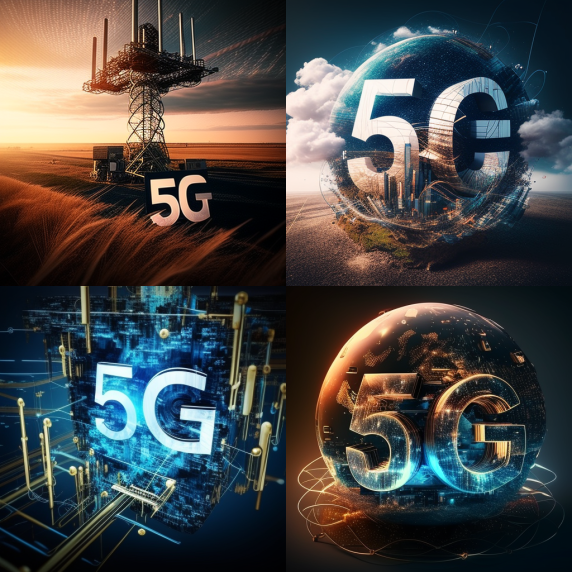Introduction:
The world is evolving rapidly, with groundbreaking advancements in technology and an increasing awareness of environmental issues. Quantum computing, sustainable fashion, 5G technology, and remote work are four critical areas that are shaping our future. In this comprehensive article, we will discuss how these technologies and trends are revolutionizing various domains and explore real-world examples and case studies to illustrate their applications. We will also offer actionable insights and focus on specific areas to provide more value to our readers.
I. Quantum Computing: A New Frontier in Computing Power
A. Fundamentals of Quantum Computing
B. Applications of Quantum Computing
C. Real-World Examples and Case Studies
II. Sustainable Fashion: A Trend with a Purpose
A. The Need for Sustainable Fashion
B. Innovative Approaches to Sustainable Fashion
C. Real-World Examples and Case Studies
III. 5G Technology: The Next Generation of Connectivity
A. Understanding 5G Technology and its Benefits
B. Applications of 5G Technology
C. Real-World Examples and Case Studies
IV. Remote Work: Adapting to the New Normal
A. The Advantages and Challenges of Remote Work
B. Technologies Enabling Remote Work
C. Real-World Examples and Case Studies
I. Quantum Computing: A New Frontier in Computing Power

- A. Fundamentals of Quantum Computing
Quantum computing is a revolutionary approach to processing information that leverages the principles of quantum mechanics. Unlike classical computers that use bits (0s and 1s), quantum computers use qubits that can exist in multiple states simultaneously. This allows them to perform complex calculations and solve problems that are currently unattainable for classical computers.
- B. Applications of Quantum Computing
- Cryptography: Quantum computing has the potential to break modern encryption methods, requiring the development of new quantum-resistant algorithms.
- Drug Discovery: Quantum computers can simulate complex molecular structures, accelerating the process of drug discovery and design.
- Optimization Problems: Quantum computing can tackle complex optimization problems in fields such as logistics, finance, and artificial intelligence.
- C. Real-World Examples and Case Studies
- Google’s Quantum Supremacy: In 2019, Google announced that its quantum computer, Sycamore, achieved quantum supremacy by solving a problem that would take a classical computer thousands of years to complete.
- IBM Quantum: IBM has been a pioneer in quantum computing research and offers cloud-based access to their quantum computers for businesses and researchers.
II. Sustainable Fashion: A Trend with a Purpose

- A. The Need for Sustainable Fashion
The fashion industry is one of the most polluting industries globally, contributing to water pollution, greenhouse gas emissions, and excessive waste. Sustainable fashion aims to address these environmental concerns by incorporating eco-friendly materials and ethical production practices.
- B. Innovative Approaches to Sustainable Fashion
- Circular Fashion: Emphasizes extending the lifecycle of clothing through recycling, upcycling, and repair.
- Slow Fashion: Encourages consumers to buy fewer, higher-quality garments that last longer.
- Ethical Manufacturing: Ensures fair labor practices, safe working conditions, and fair wages for workers.
- C. Real-World Examples and Case Studies
- Patagonia: A renowned outdoor clothing brand that promotes sustainability by using recycled materials and implementing fair labor practices.
- Stella McCartney: A luxury fashion brand that focuses on cruelty-free, eco-friendly materials and ethical production.
III. 5G Technology: The Next Generation of Connectivity

- A. Understanding 5G Technology and its Benefits
5G technology is the fifth generation of wireless communication, offering faster speeds, lower latency, and increased capacity compared to its predecessors. These improvements enable a plethora of new applications and use cases, from enhanced mobile broadband to the Internet of Things (IoT).
- B. Applications of 5G Technology
- Smart Cities: 5G enables the interconnectivity of various devices and sensors to improve urban infrastructure and services.
- Autonomous Vehicles: The low latency of 5G networks allows for real-time communication between autonomous vehicles, improving safety and efficiency.
- Telemedicine: 5G’s high bandwidth and low latency facilitate remote consultations, medical monitoring, and even remote surgeries.
- C. Real-World Examples and Case Studies
- Verizon’s 5G Home: This service offers high-speed home internet using 5G technology, providing a wireless alternative to traditional broadband.
- South Korea’s 5G Implementation: South Korea has been at the forefront of 5G adoption, with companies like Samsung and LG collaborating on innovative use cases like remote robot control and 5G-powered smart factories.
IV. Remote Work: Adapting to the New Normal

- A. The Advantages and Challenges of Remote Work
Remote work has become increasingly popular due to advances in technology and the need for greater flexibility. This shift offers several advantages, such as reduced commuting time, increased productivity, and a better work-life balance. However, remote work also presents challenges, including reduced social interaction, blurred work-life boundaries, and the potential for miscommunication.
- B. Technologies Enabling Remote Work
- Video Conferencing: Platforms like Zoom, Microsoft Teams, and Google Meet facilitate real-time communication and collaboration among remote teams.
- Project Management Tools: Applications like Asana, Trello, and Basecamp help teams stay organized and manage tasks efficiently.
- Virtual Private Networks (VPNs): VPNs secure remote connections and protect sensitive data while working from home.
- C. Real-World Examples and Case Studies
- GitLab: This software development company has successfully adopted a fully remote work model, employing more than 1,000 team members across 60 countries.
- Shopify: In response to the COVID-19 pandemic, this e-commerce giant transitioned its entire workforce to remote work and has since decided to maintain a “digital-first” approach permanently.
Conclusion:
Quantum computing, sustainable fashion, 5G technology, and remote work are transforming the way we live, work, and interact. By understanding these advancements and their applications, we can better adapt to the rapidly changing world and work towards a more sustainable and innovative future. By focusing on real-world examples and offering actionable insights, this article aims to provide valuable information to help readers stay informed and prepared for the challenges and opportunities these trends present.
